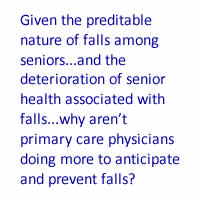March 16th, 2011 by Davis Liu, M.D. in Health Tips, Opinion
No Comments »

Colon cancer screening has a particular personal interest for me — one of my colleagues in residency training had her father die of colon cancer when she was a teenager.
No one should lose a loved one to a disease that, when caught early, is often treatable. But for both men and women, colon cancer is the third most common cancer behind lung cancer and prostate cancer in men, and behind lung cancer and breast cancer in women, it’s the second most lethal.
The problem is that patients are often confused about which test is the right one. Is it simply a stool test? Flexible sigmoidoscopy? Colonoscopy? Virtual colonoscopy? Isn’t there just a blood test that can be done? (No.)
In simple terms, this is what you need to know:
All men and women age 50 and older should be screened for colon cancer. Even if you feel healthy and well and have no family history, it must be done. Note that Oprah’s doctor, Dr. Oz, arguably a very health-conscious individual learned that he had a colon polyp at age 50 after a screening test. Left undetected, it could have cut his life short. This wake-up call caused him to abort his original second season premier on weight loss and instead show the country why colon cancer screening matters. He admitted that if it wasn’t for the show and the need to demonstrate the importance of screening to America, he would have delayed having any test done.
The least invasive test is a stool test. If it is to screen for colon cancer, then the test is done at home and NOT in the doctor’s office. Either the fecal occult blood test (FOBT) or the fecal immunochemical test (FIT) are available to screen for unseen microscopic blood that could be a sign of a colon polyp or cancer. Research shows that when a stool test is done annually, the risk of dying from colon cancer can fall by 15 to 33 percent. If you don’t want any fiber optic cameras in your rectum and lower colon, this is the test for you. You must do it annually.
The next two tests are similar but often confused: The flexible sigmoidoscopy and the colonoscopy. Read more »
*This blog post was originally published at Saving Money and Surviving the Healthcare Crisis*
March 10th, 2011 by Shantanu Nundy, M.D. in Health Tips, Research
1 Comment »

What is the leading cause of death in the United States? Heart disease? Cancer? No, it’s smoking. Smoking? Yes, depending on how you ask the question.
In the early 90s, McGinnis and Foege turned the age-old question of what people die of on its head by asking not what diseases people die of but rather what the causes of these are. Instead of chalking up the death of an older man to say lung cancer, they sought to understand the proximate cause of death, which in the case of lung cancer is largely smoking. Using published data, the researchers performed a simple but profound calculation — they multiplied the mortality rates of leading diseases by the cause-attributable fraction, that proportion of a disease that can be attributed to a particular cause (for example, in lung cancer 90 percent of deaths in men and 80 percent of deaths in women are attributable to smoking). Published in JAMA in 1993, their landmark study became a call to action for the public health community.
When looked at the conventional way, using data from the 2004 update of the original study, heart disease, cancer, and stroke are the leading causes of death, respectively. This accounting may help us understand the nation’s burden of illness, but does little to tell us how to prevent these diseases and improve health. Through the lens of McGinnis and Foege we get the actual causes of death (e.g., the major external modifiable factors that contribute to death). This analysis shows that the number one cause of death in America is tobacco use, followed closely by poor diet and lack of physical activity, and then alcohol consumption. Read more »
*This blog post was originally published at BeyondApples.Org*
March 4th, 2011 by Toni Brayer, M.D. in Health Tips, Research
No Comments »

 There are few medical conditions that people fear more than a stroke. We know that blood pressure control and lowering cholesterol levels reduces stroke risk. Now, thanks to a huge analysis from Italy published in the Journal of the American College of Cardiology, we know that higher dietary consumption of potassium is associated with lower rates of stroke and could also reduce the risk of coronary heart disease and total cardiovascular disease, too. What is even more remarkable is that the results apply to all parts of society and not just to specific “at-risk” subgroups.
There are few medical conditions that people fear more than a stroke. We know that blood pressure control and lowering cholesterol levels reduces stroke risk. Now, thanks to a huge analysis from Italy published in the Journal of the American College of Cardiology, we know that higher dietary consumption of potassium is associated with lower rates of stroke and could also reduce the risk of coronary heart disease and total cardiovascular disease, too. What is even more remarkable is that the results apply to all parts of society and not just to specific “at-risk” subgroups.
Most doctors aren’t even aware of how important it is to eat potassium-rich foods. And what are these foods that have potassium? Surprise: It’s fruits and vegetables like bananas, tomatoes, oranges, apricots, most legumes, spinach, winter squash, avocado, kiwi, and cantaloupe. Actually, almost all fruits and veggies have moderate to high potassium content.
The researchers looked a number of well-done studies that included 247, 510 participants over age 30 and found that those patients with the higher potassium intake reduced their stroke risk by 21 percent. The Italian doctors say the protective effect of potassium against stroke is in part due to its blood pressure lowering effects and also due to other properties of the potassium mineral, such as the inhibition of free radical formation.
I’ve written before about the DASH diet, which also found that reduction of sodium and addition of fruits and vegetables to the diet is an effective way to control blood pressure. The DASH diet is high in potassium.
Think about it: Did you have five servings of fruits and vegetables today? Numerous studies have shown their life-prolonging benefits. This new study just adds to what we already know. I challenge all readers to keep a diet count and make sure you are eating five fruit and vegetable servings a day — every day — to help reduce your risk of stroke, cancer, and heart attack.
*This blog post was originally published at EverythingHealth*
March 3rd, 2011 by StevenWilkinsMPH in Opinion, True Stories
No Comments »

We hear about stories like this all time: An elderly person falls and breaks something — a hip, a wrist, or an arm. Soon what once was a healthy, independent senior begins an inexorable downhill slide. Such is the case of my 89-year-old mother who recently fell and broke her wrist.
Turns out that 30 percent of people age 65 and older fall each year. Predictably, seniors with the following risk factors are more prone to falls:
- Using sedatives
- Cognitive impairment
- Problems walking
- Urinary tract infection
- Eye problems
- Balance issues
Similarly, when a person does fall, a cascading series of predictable clinical events occurs. It even has a name: “Post-fall syndrome.” This syndrome is characterized by things like fear of falling again, increased immobility, loss of muscle and control, lack of sleep, nutritional deficits, and so on. Seniors susceptible to falls also have higher rates of hospitalization and institutionalization.

What strikes me about falls among the elderly is that they are seemingly predictable events. And once a fall does occur, the consequences seem pretty predictable as well — enter post-fall syndrome. So if falls and their consequences are so predictable, why aren’t primary care physicians more proactive in terms of:
- Preventing falls?
- Treating post-fall syndrome?
In the case of my mother, her primary care physician and orthopedist were both very diligent at treating her episodic needs (i.e. her pain and broken bones). But little attention, if any, was given to assessing her long-term needs, such as nutrition, inability to do anything with her left hand (she’s left-handed), sensitivity to new medications (she never took drugs because they make her loopy), gait analysis, and depression counseling. Read more »
*This blog post was originally published at Mind The Gap*
February 27th, 2011 by Glenn Laffel, M.D., Ph.D. in Better Health Network, Research
No Comments »

Most people know that the U.S. is struggling to contain a surging epidemic of obesity, and that the problem is most acute among African-Americans. Whereas about 27 percent of all adult Americans are obese (defined as having a body mass index of 30 or more), fully 37 percent of African-American adults are obese, and that number jumps to an appalling 42 percent among African-American women.
Over the years, public health officials have provided evidence that socioeconomic and cultural factors drive this racial disparity. Now, a new study suggests there is another reason as well: Obese African-Americans receive less obesity-related counseling than their white counterparts, and it matters not whether the physicians they see are African-American or white.
To reach these conclusions, Sara Bleich and colleagues from the Johns Hopkins School of Public Health used clinical encounter data from the 2005–2007 National Ambulatory Medical Care Surveys (NAMCS). The sample included 2,231 visits involving African-American and white obese people who were at least 20 years old and who visited family practitioners and internists that were either African-American or white. Asian and Hispanic patients and physicians were excluded from the study because their numbers were too small to permit hypothesis testing.
For each encounter in the study, the scientists determined whether the patient received guidance on weight reduction, diet and nutrition, or exercise from his or her physician. Read more »
*This blog post was originally published at Pizaazz*

















